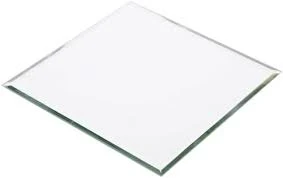

The Cost of Acid Etched Glass Factors and Considerations
Acid etched glass is a popular choice in both residential and commercial design due to its aesthetic appeal and versatility. The unique frosted finish, created through a chemical process using acid, gives the glass a sophisticated look while allowing light to filter through. However, the price of acid etched glass can vary significantly based on several factors. In this article, we will explore the elements that influence the cost of acid etched glass, helping you make an informed decision for your projects.
1. Type of Glass
The type of glass used is one of the primary factors affecting the price of acid etched glass. Common options include clear float glass, laminated glass, and tempered glass. Each type has its own price point due to differences in manufacturing processes and material properties. For instance, tempered glass, known for its strength and safety features, tends to be more expensive than regular float glass. The selection of glass will depend on the intended use, whether for shower doors, partition walls, or decorative elements.
2. Size and Thickness
The dimensions and thickness of the glass panel are crucial elements that influence pricing. Larger panels or thicker glass naturally come with higher costs due to increased production material and handling requirements. Custom sizes may also incur additional charges, as this often requires specialized cutting and processing techniques. For standard sizes, buyers may find more competitive pricing. However, if an aesthetic requires specific dimensions, it’s essential to budget accordingly.
Acid etching can produce a wide range of designs, from simple patterns to intricate artwork. The complexity of the design greatly impacts the cost. Basic frosted finishes are generally more affordable, while custom designs that require detailed etching involve additional labor and time, driving up the price. If you choose to have a unique pattern or logo etched into the glass, expect to pay a premium for the design work involved.

4. Quantity
Bulk purchases often lead to cost savings. Many suppliers provide discounts when buying acid etched glass in larger quantities. If you have multiple projects or a large installation, consider purchasing all necessary panels at once to take advantage of wholesale pricing. Conversely, for single or smaller projects, the per-unit cost can be notably higher.
5. Supplier and Market Trends
Prices for acid etched glass can also vary depending on the supplier and market conditions. Different manufacturers may have distinct pricing structures based on their production capabilities, location, and reputation. It is advisable to compare quotes from various suppliers to find the best deal. Additionally, fluctuations in the glass market due to changes in manufacturing costs, availability of raw materials, or economic conditions can affect prices at any time.
6. Installation Costs
Apart from the cost of the glass itself, installation fees should also be taken into account. Depending on the complexity of the installation, hiring a professional may be necessary to ensure that the glass is correctly and safely installed. Installation costs can vary based on the project’s location, the installer’s experience, and the amount of labor required.
Conclusion
Acid etched glass offers a beautiful, functional solution for many design needs, but the price can vary based on numerous factors including the type of glass, size, design complexity, quantity, supplier, and installation costs. By understanding these elements, you can better navigate the market for acid etched glass and find the best options that suit your budget and requirements. Whether upgrading your home or designing a commercial space, careful consideration of these factors will lead you to a successful and satisfying outcome.